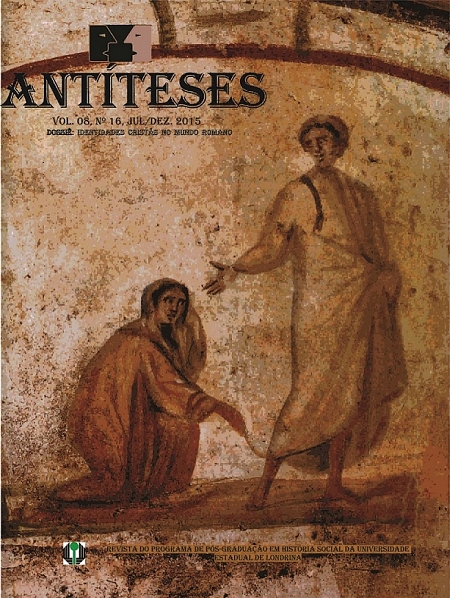Among conflict hypothesis and commercial society. Puerto Quequén (Argentina) and the ports of Brazil, 1929-1955
DOI:
https://doi.org/10.5433/1984-3356.2015v8n16p149Keywords:
History, Foreing trade, Navigation, Argentina and Brazil, CerealsAbstract
From the Great Depression to the postwar, economic relations between countries experienced a period of accommodation. The global food market suffered heavy alterations, where a number of countries competed for the location of their agricultural surpluses. Changes in international demand, in terms of trade and the restrictions placed on the entry of products for countries participating heavily on the export of commodities, such as Argentina, raised residual markets seeking to locate their agricultural surpluses. This new situation, besides being an incentive of substitution industrialization, mostly addressed in the region by Argentina and Brazil, also weakened the regional dependence on its traditional trading partners, allowing the integration of their economies and strengthening trade association alternatively, generating a stream of exchange centered in wheat consolidate and then survive the war in an integration would follow different paths to the possibility of conflict or interests aimed at promoting discord between Argentina and Brazil. In this paper we measure and evaluate this process from shipping traffic in Puerto Quequén -in the Province of Buenos Aires, Argentina- between 1929 and 1955Downloads
Download data is not yet available.
References
ALEXANDER, R. The Peron Era. New York: Columbia University Press, 1951.
BACON, L. B.; SCHLOEMER, F. C.; TAYLOR, H. C. World Trade in Agricultural Products: Its Growth; Its Crisis; and the New Trade Policies. Roma: International Institute of Agriculture, 1940.
BANDEIRA, L. M. Brasil, Argentina e Estados Unidos: conflito e integração na América do Sul (da Tríplice Aliança ao Mercosul). Rio de Janeiro: Civilização Brasileira, 2010.
BARSKY, O. La caída de la producción agrícola en la década de 1940. In: BARSKY, O. et al. (Ed.). La agricultura pampeana. Transformaciones productivas y sociales. Buenos Aires: FCE-IICA-CISEA, 1988.
BOLT, J.; ZANDEN, J. L. VAN. The Maddison Project. 2013. Disponível em: http://www.ggdc.net/maddison/maddison-project/abstract.htm?id=4. Acesso em: 12 ago. 2014.
CADENAZZI, G. L. De granero a aceitera del mundo. Las exportaciones agrarias argentinas entre 1930 y 1970. Agroalimentaria, v. 17, n. 33, p. 35-50, 2011.
COMISIÓN ECONÓMICA PARA AMÉRICA LATINA. La Agricultura de América Latina 1951 -1952. Revista de Comercio Exterior, México, v. 3, n. 4, p. 126-129, 1953.
DIRECCIÓN GENERAL DE ESTADÍSTICA DE LA NACIÓN. Anuario del Comercio Exterior. República Argentina. Buenos Aires: Talleres S. A. Casa Jacobo Peuser, 1933.
ESCUDÉ, C. 1942-1949, Gran Bretaña, Estados Unidos y la declinación argentina. Buenos Aires: Ed. de Belgrano, 1983.
FERRERES, O. Dos Siglos de Economía Argentina 1810 - 2004. Buenos Aires: Norte Y Sur, 2005.
GARCÍA VIZCAINO, J. Tratado de Política Económica Argentina. Buenos Aires: Eudeba, 1974. v. I
GRAVIL, R. State Intervention in Argentina's Export Trade between the Wars. Latin American Studies, año 2, p. 156-157, 1970.
MARTINS, J. DE S. Conde de Matarazzo o empresário e a empresa. São Paulo: HUTICEC, 1976.
MATEO, J. El impacto de un nuevo puerto: la construcción de su hinterland y de su foreland. Puerto Quequén, provincia de Buenos Aires entre 1921 y 1932. Mundo Agrario, v. 15, n. 29, 2014a.
MATEO, J. Entre la crisis y un puerto Nuevo: las exportaciones agrícolas de la región de Puerto Quequén durante la Gran Depresión (1929-1939). HiSTOReLo. Revista de Historia Regional y Local, v. 6, n. 11, 2014b.
MORGAN, D. Los traficantes de granos. Buenos Aires: Editorial Abril, 1983.
NEMIROVSKY, L. Estructura económica y orientación política de la agricultura en la República Argentina. Buenos Aires: Menéndez, 1933.
PAGÉS, P. T. Crisis agrícola: conferencia dada en el aula de la Facultad de agronomía y veterinaria de Buenos Aires . Universidad de Buenos Aires. Facultad de Agronomía y Veterinaria: Talleres gráficos "Gadola", abr. 1934. Disponível em: http://books.google.com.ar/books/about/Crisis_agrícola.html?id=9jrTAAAAMAAJ&redir_esc=y. Acesso em: 3 set. 2014.
RAPOPORT, M.; SPIGUEL, C. La Argentina y el Plan Marshall: promesas y realidades. Revista Brasileira de Política Internacional, v. 52, n. 1, p. 5-28, 2009.
SCHVARZER, J. Bunge & Born: crecimiento y diversificación de un grupo económico. Buenos Aires: CISEA, 1989.
SOURROUILLE, J. V.; RAMOS, A. El trigo y las ganancias del IAPI entre 1946 y 1949: Miranda y la política económica en los inicios del peronismo. Desarrollo Económico, v. 53, n. 209-210, p. 27-56, 2013.
TULCHIN, J. Una perspectiva histórica de la política argentina frente al Brasil. Estudios Internacionales, v. 52, p. 468-470, 1980.
TULCHIN, J. S. La Argentina y los Estados Unidos, historia de una desconfianza. Buenos Aires: Planeta, 1990..
BACON, L. B.; SCHLOEMER, F. C.; TAYLOR, H. C. World Trade in Agricultural Products: Its Growth; Its Crisis; and the New Trade Policies. Roma: International Institute of Agriculture, 1940.
BANDEIRA, L. M. Brasil, Argentina e Estados Unidos: conflito e integração na América do Sul (da Tríplice Aliança ao Mercosul). Rio de Janeiro: Civilização Brasileira, 2010.
BARSKY, O. La caída de la producción agrícola en la década de 1940. In: BARSKY, O. et al. (Ed.). La agricultura pampeana. Transformaciones productivas y sociales. Buenos Aires: FCE-IICA-CISEA, 1988.
BOLT, J.; ZANDEN, J. L. VAN. The Maddison Project. 2013. Disponível em: http://www.ggdc.net/maddison/maddison-project/abstract.htm?id=4. Acesso em: 12 ago. 2014.
CADENAZZI, G. L. De granero a aceitera del mundo. Las exportaciones agrarias argentinas entre 1930 y 1970. Agroalimentaria, v. 17, n. 33, p. 35-50, 2011.
COMISIÓN ECONÓMICA PARA AMÉRICA LATINA. La Agricultura de América Latina 1951 -1952. Revista de Comercio Exterior, México, v. 3, n. 4, p. 126-129, 1953.
DIRECCIÓN GENERAL DE ESTADÍSTICA DE LA NACIÓN. Anuario del Comercio Exterior. República Argentina. Buenos Aires: Talleres S. A. Casa Jacobo Peuser, 1933.
ESCUDÉ, C. 1942-1949, Gran Bretaña, Estados Unidos y la declinación argentina. Buenos Aires: Ed. de Belgrano, 1983.
FERRERES, O. Dos Siglos de Economía Argentina 1810 - 2004. Buenos Aires: Norte Y Sur, 2005.
GARCÍA VIZCAINO, J. Tratado de Política Económica Argentina. Buenos Aires: Eudeba, 1974. v. I
GRAVIL, R. State Intervention in Argentina's Export Trade between the Wars. Latin American Studies, año 2, p. 156-157, 1970.
MARTINS, J. DE S. Conde de Matarazzo o empresário e a empresa. São Paulo: HUTICEC, 1976.
MATEO, J. El impacto de un nuevo puerto: la construcción de su hinterland y de su foreland. Puerto Quequén, provincia de Buenos Aires entre 1921 y 1932. Mundo Agrario, v. 15, n. 29, 2014a.
MATEO, J. Entre la crisis y un puerto Nuevo: las exportaciones agrícolas de la región de Puerto Quequén durante la Gran Depresión (1929-1939). HiSTOReLo. Revista de Historia Regional y Local, v. 6, n. 11, 2014b.
MORGAN, D. Los traficantes de granos. Buenos Aires: Editorial Abril, 1983.
NEMIROVSKY, L. Estructura económica y orientación política de la agricultura en la República Argentina. Buenos Aires: Menéndez, 1933.
PAGÉS, P. T. Crisis agrícola: conferencia dada en el aula de la Facultad de agronomía y veterinaria de Buenos Aires . Universidad de Buenos Aires. Facultad de Agronomía y Veterinaria: Talleres gráficos "Gadola", abr. 1934. Disponível em: http://books.google.com.ar/books/about/Crisis_agrícola.html?id=9jrTAAAAMAAJ&redir_esc=y. Acesso em: 3 set. 2014.
RAPOPORT, M.; SPIGUEL, C. La Argentina y el Plan Marshall: promesas y realidades. Revista Brasileira de Política Internacional, v. 52, n. 1, p. 5-28, 2009.
SCHVARZER, J. Bunge & Born: crecimiento y diversificación de un grupo económico. Buenos Aires: CISEA, 1989.
SOURROUILLE, J. V.; RAMOS, A. El trigo y las ganancias del IAPI entre 1946 y 1949: Miranda y la política económica en los inicios del peronismo. Desarrollo Económico, v. 53, n. 209-210, p. 27-56, 2013.
TULCHIN, J. Una perspectiva histórica de la política argentina frente al Brasil. Estudios Internacionales, v. 52, p. 468-470, 1980.
TULCHIN, J. S. La Argentina y los Estados Unidos, historia de una desconfianza. Buenos Aires: Planeta, 1990..
Downloads
Published
2016-01-18
How to Cite
MATEO, José Antonio. Among conflict hypothesis and commercial society. Puerto Quequén (Argentina) and the ports of Brazil, 1929-1955. Antíteses, [S. l.], v. 8, n. 16, p. 149–176, 2016. DOI: 10.5433/1984-3356.2015v8n16p149. Disponível em: https://ojs.uel.br/revistas/uel/index.php/antiteses/article/view/21149. Acesso em: 16 jan. 2026.
Issue
Section
Articles
License
Copyright (c) 2015 Antiteses

This work is licensed under a Creative Commons Attribution 4.0 International License.
The journal reserves the copyright on the contributions published, without material compensation for the author, and may make them available online in Open Access mode, through its own system or other databases; you can also make normative, orthographic and grammatical changes in the originals, in order to maintain the cultured standard of the language, with the final consent of the authors. The opinions expressed by the authors are their sole responsibility.










